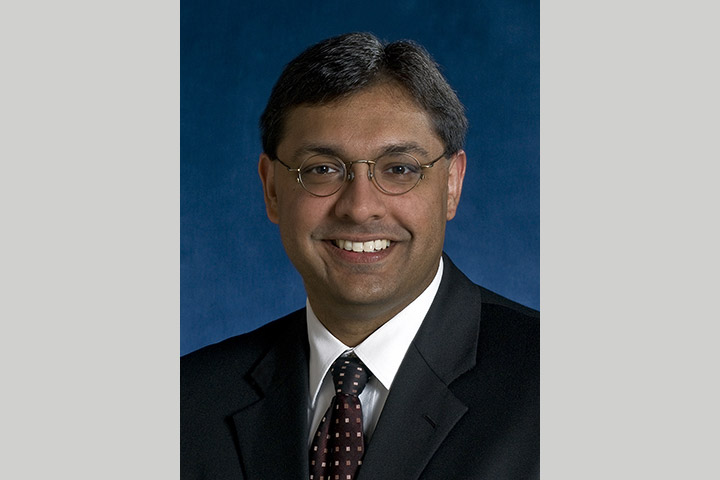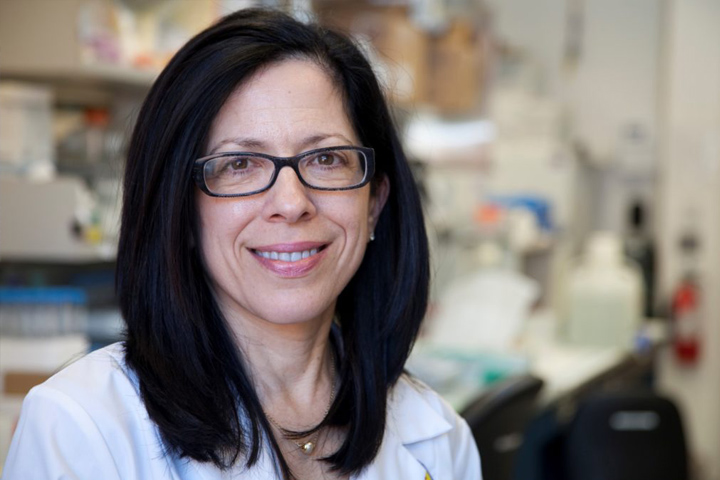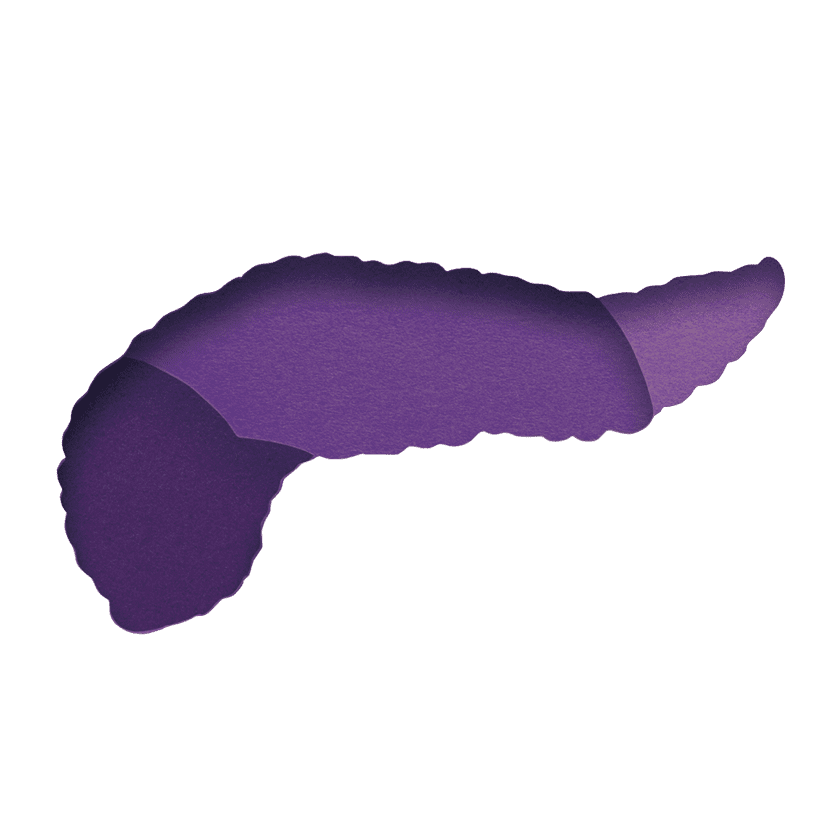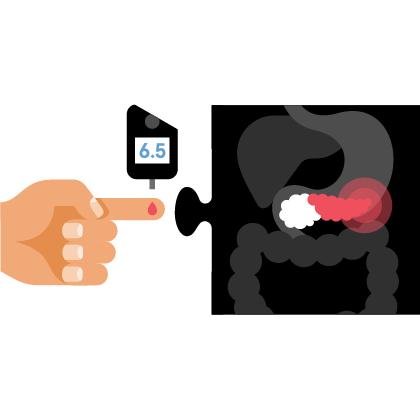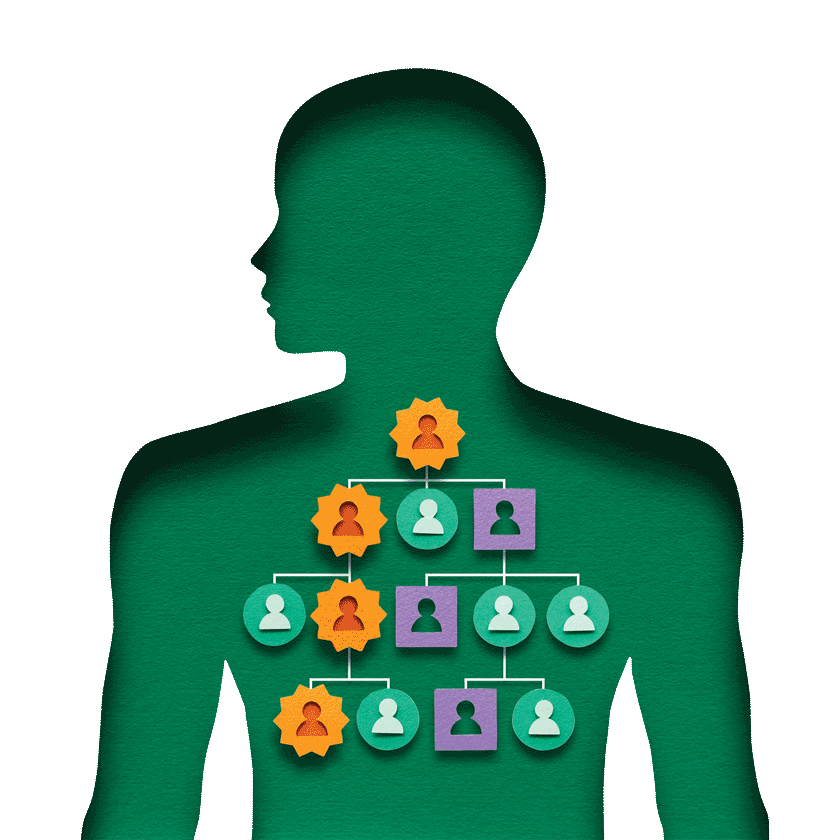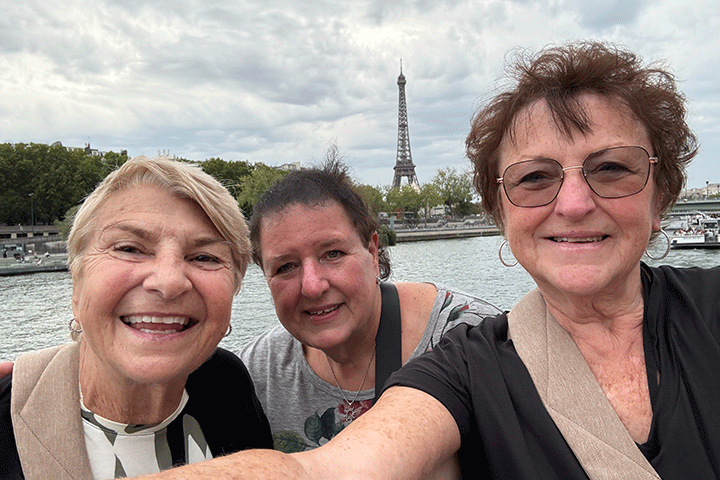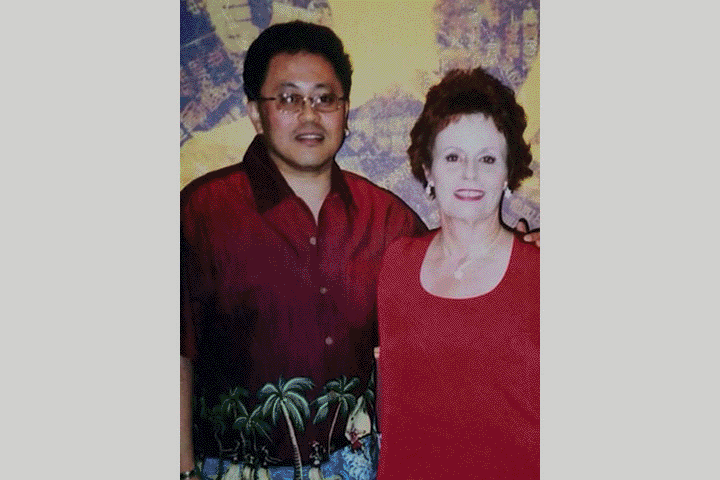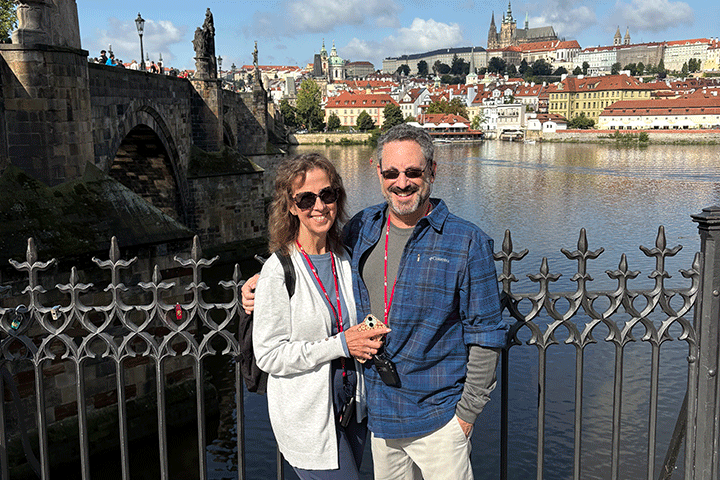Not Just a Survivor . . . A Sur-thriver!
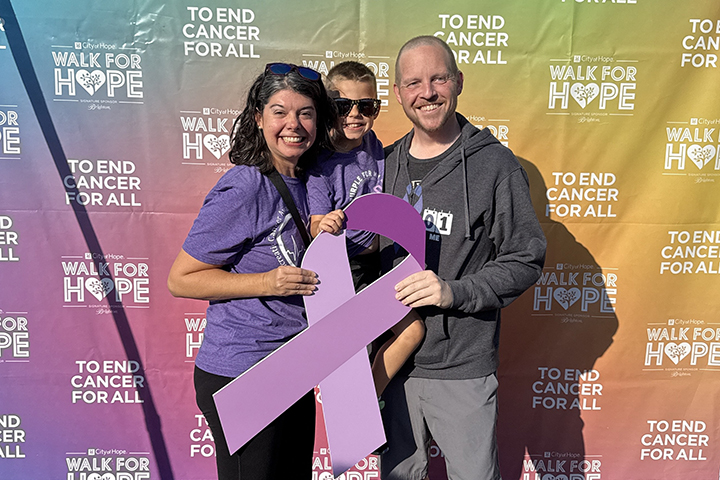
- Diagnosed with stage IV pancreatic cancer
- Extensive testing finds a rare “RET” genetic mutation
- Staying healthy despite cancer, diabetes, and chemotherapy
On May 20th of 2025, I was diagnosed with stage IV metastatic pancreatic cancer.
Stage IV is the most severe cancer stage and means it has spread to other organs. With a loving family, supportive friends, and an excellent team of medical providers by my side, I got to work.
Understanding the Tumor
I sought treatment at City of Hope Cancer Center in Zion, Illinois, which has been recognized as a top five cancer hospital nationwide by U.S. News & World Report. Immediately after the diagnosis, my doctor ordered a PET scan, microsatellite instability test, and an NGS (next-generation sequencing) test to find out more. At first, my wife Elizabeth and I were devastated and felt defeated, but then, after watching a video from fellow pancreatic cancer survivor Chris Parrish (who I eventually met at City of Hope!), we became hopeful and optimistic that I could beat this thing. I’m young enough to respond well to any treatment they throw at us.
One recommendation I heard early on was the importance of preparing my body for the treatments to come. Admittedly, nutrition has never been my strong suit. The fact that I am diabetic makes everything more challenging. But my research indicated that clean eating was the way to go.
The PET scan revealed that the cancer had not spread beyond my liver. It may have spread to a lymph node nearest to the head of the pancreas, but not beyond. This was the first bit of good news we received since the diagnosis, and we were thrilled about it!
We also found out that the cancer was on the head of my pancreas, which commonly shuts down digestive enzymes. So, the supplemental digestive enzymes (Creon) are a forever med for me now.
My oncologist, Dr. Evan Pisick, explained to me that this cancer is not “curable,” but it is treatable. The goal of treatment is to extend my time on this planet years or decades beyond what it would be if I did nothing. I knew from his positive vibe that I had been matched with the right doctor.
My Treatment Plan
I had so many appointments leading up to my treatment—genetic counseling, pain management, a mental health counselor, and a dietitian. This first dietitian noted how difficult it would be to manage my nutrition through chemotherapy as my cancer and diabetes have conflicting dietary requirements. She didn’t give me a ton of specifics, so I decided to get a second opinion. The new dietitian, Alison Tierney, was outstanding and gave me some helpful tips for getting the most out of my diet and my regimen. Alison became an amazing pillar of my support team throughout treatment and taught me so much about fortifying my body to fight.
My doctors looked at 40 different genetic markers that are related to pancreatic cancer, 36 of which are just indicators that this is a genetic concern for my close family members. The remaining four could lead to treatments that would be on top of the chemotherapy regimen and/or impact the maintenance plan once we stop chemo. They ran genetic testing on me and the cancer separately because the cancer may have its own genomic abnormalities that are separate from mine. For example, the genetic mutations of the BRCA1 and BRCA2 genes (two out of the four that could lead to different treatment options) may not be found in my DNA but may exist in the cancer’s DNA.
Insertion of My Port
To prepare for treatment, I received a “port” just below my left clavicle. This is a small access point underneath my left clavicle where the docs can do blood draws; it can also be connected for chemotherapy infusions. In other words, the port saved my nurses the embarrassment of missing my veins, which are often described as both “juicy” and “elusive.”
A Rare Genetic Mutation
Now for some good news: We found out that the cancer has a “RET” genetic mutation that impacts the protein fusion in the cancer. This is a very rare mutation in pancreatic cancer. Dr. Pisick said in his 15 years, he had never seen it in a case of pancreatic cancer. The good news is that there is a drug to treat this type of mutation… but it had only been tested in lung cancer and the efficacy or side effects for pancreatic cancer patients are not known. So, we agreed that it was best to start with “the tried and true” FOLFIRINOX chemo treatment first. Either way, we felt fortunate to have a backup plan in place.
In Treatment
I was excited to finally begin treatment. I began chemo on June 9 and continued every two weeks with the intention of completing twelve rounds total.
Funny enough, the only side effects from that first day were mostly due to Benadryl. They used it to minimize any potential reaction to the chemo. It knocked me out for most of the first infusion! I went home with a pump that continuously dripped more 5-FU over 46 hours through a tube connected to my chest port. I carried it with me everywhere and it slept beside me. It looked like a purse, save the small clear tube that came from the pack and ran under my shirt.
Our son, Emmett (age 5), asked about the pack and the tube. I showed it to him and reminded him of how he got medicine through tubes for a heart condition when he was a baby. Then I thanked him for teaching me how to be brave when getting medicine.
The next day I felt great. I had minimal side effects until I hit a fatigue wall in the afternoon. On the third day I got disconnected from the pump. It was liberating to not have to monitor my every move. I was able to eat a sweet potato and lentil soup made by my mom and recommended by my dietitian. I had some mild stomach symptoms but was able to keep food down, which is a key to recovery.
Within a few weeks of starting treatment, I had the routine down and I felt pretty good. Throughout three months of treatment, I encountered stomach issues, neuropathy, a sore throat, scalp pain, and bouts of dizziness and a headache here and there, but, overall, I tolerated these symptoms well. A key piece of my preparation for treatment, which was recommended by my dietitian, is fasting. I begin my fast 24 hours prior to treatment and end it as soon as I’m disconnected from my pump. This ends up being a 72-hour fasting period.
The thinking behind this is two-fold. First, it helps manage symptoms such as nausea, vomiting, and diarrhea. Second, research into fasting shows that our cells have a defense mechanism to protect themselves during times of starvation (or fasting). Research also indicates that cancer cells do not possess this defense mechanism. This may lead to more effective chemo treatments. Fasting is definitely not easy, but I worked with my dietitian to develop a plan where I reduce carb intake two days prior to my fasting day, which really helps curb my glucose spikes and my hunger.
My goals between cycles were to eat as much as possible, gain weight, and gain muscle mass if possible. I would eat five to six “plant forward” meals per day, trying to exceed 100g of protein per day, and working out as much as I could tolerate. Working out meant a brisk walk or chasing Emmett around. I eventually added in resistance training but had to wait for the glue to dissolve on my port incision before I could do anything too strenuous.
After the second or third chemo treatment, I decided to preemptively shave my hair. I did not want my son to see my hair falling out. I let him do some trimming, and it ended up being fun.
A Side Note . . . Diabetes
I have only been diabetic for a few years, and I was developing insulin resistance for a decade before that. This is one of the reasons why nutrition and diet are so hard to balance with pancreatic cancer. Looking back, developing diabetes at my stage in life may have been an early warning sign for pancreatic cancer. I wish I had known this 10 to 15 years ago.
“Complete Remission”
By early September I had completed six full cycles of chemo. It was time for another PET scan. The scan works by tracking a mild radioactive sugar injected 45 minutes before the procedure. All cells absorb the sugar, including tumors, and this is how they can see the number and size of tumors.
Dr. Pisick said the scan found no tumors. All of them appeared to be gone. He used the words “complete remission.” Words cannot fully express how we felt at that moment.
Our plan at that point was to continue through the full 12 cycles as that is the standard course of treatment. This kind of cancer is extremely prolific and good at setting up shop elsewhere. After that, we will do a CT scan, which will give us more detail in terms of scar tissue, etc. Then, we will decide if we continue with chemo maintenance, which would be a more spread-out chemo schedule, or maybe a chemo holiday, which would be a break from chemo for several months.
What’s Next?
While “complete remission” was the best possible news we could have gotten that day, I would not be taking anything for granted. I promised myself to keep doing what I was doing all along in terms of diet and exercise. I couldn’t have come this far without the support and care of all of my family and friends.
My family participated in the City of Hope Walk for Hope on Saturday, October 4. Elizabeth, Emmett, and I walked with the same positivity that kept me going throughout this entire journey.
